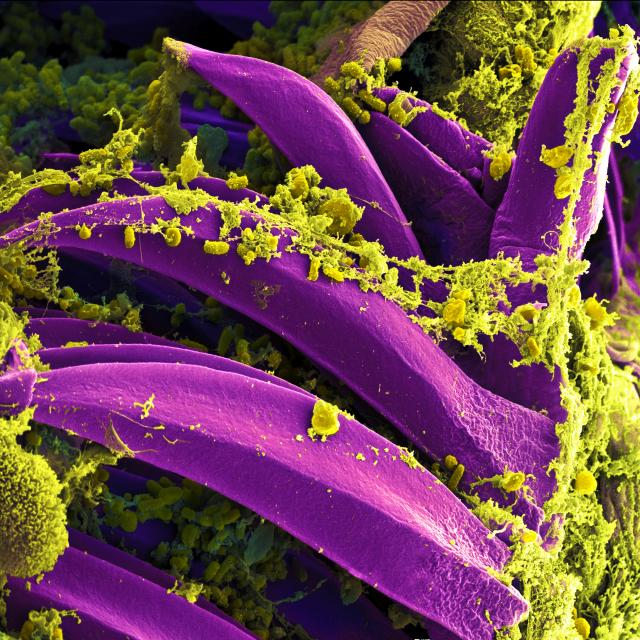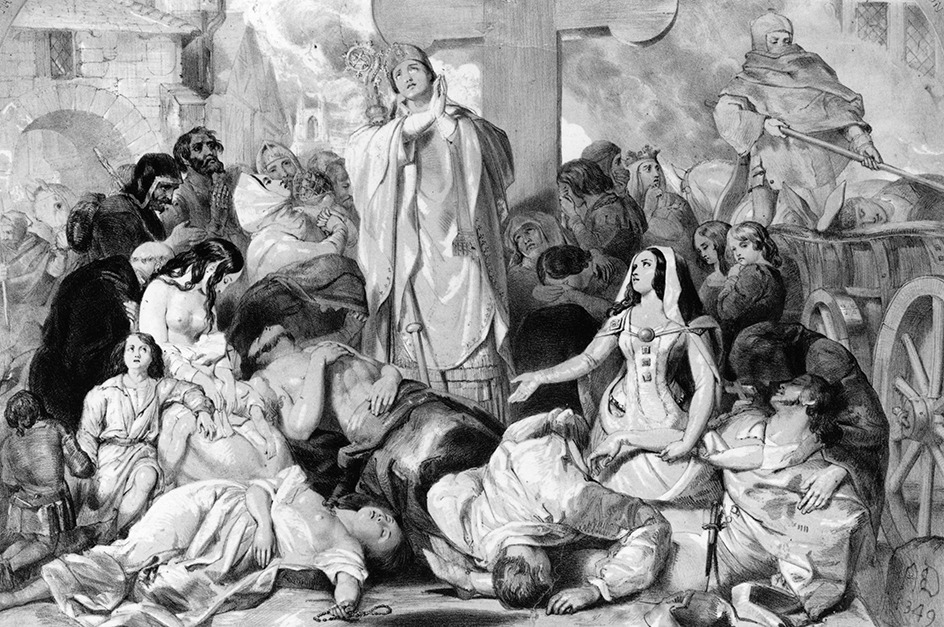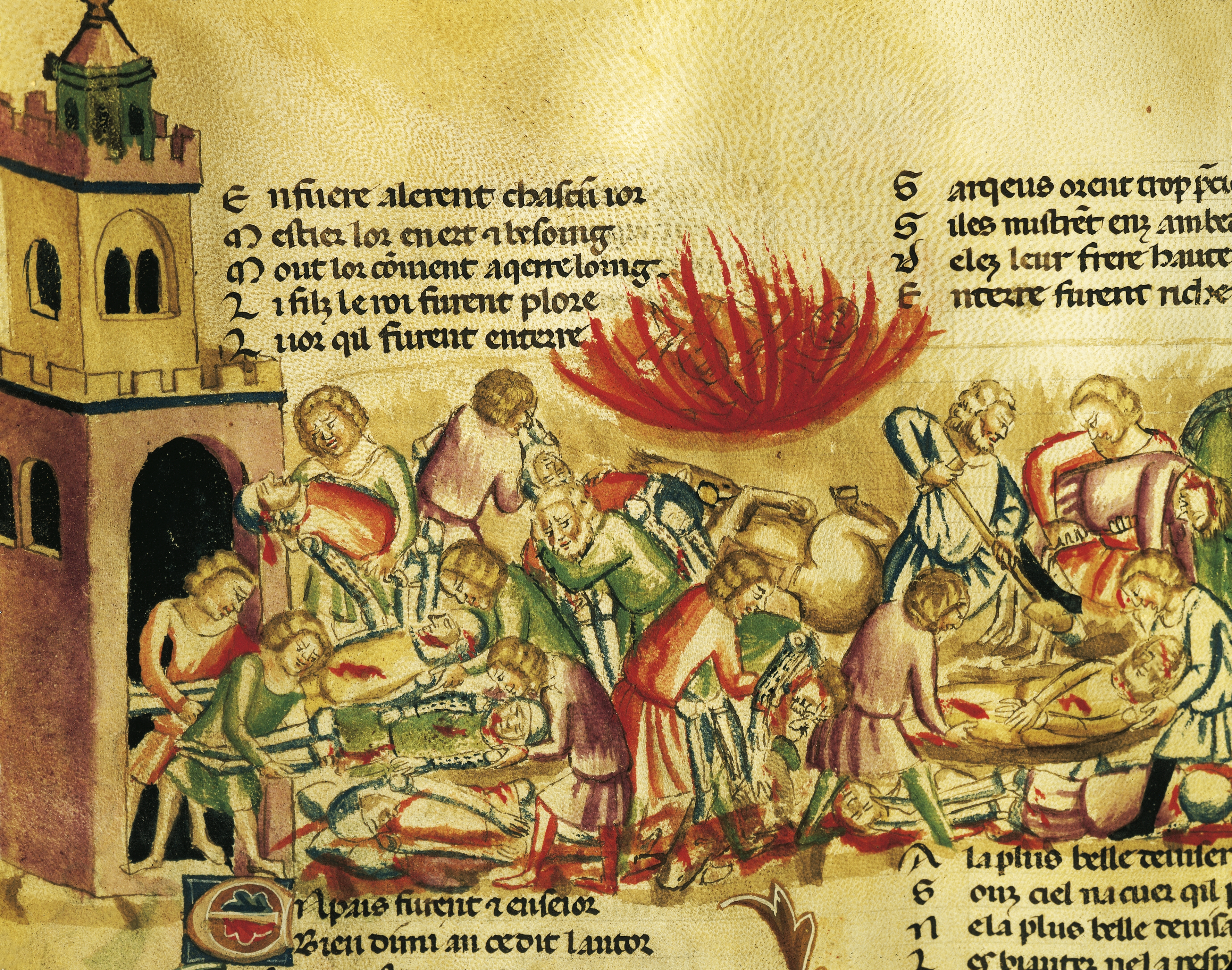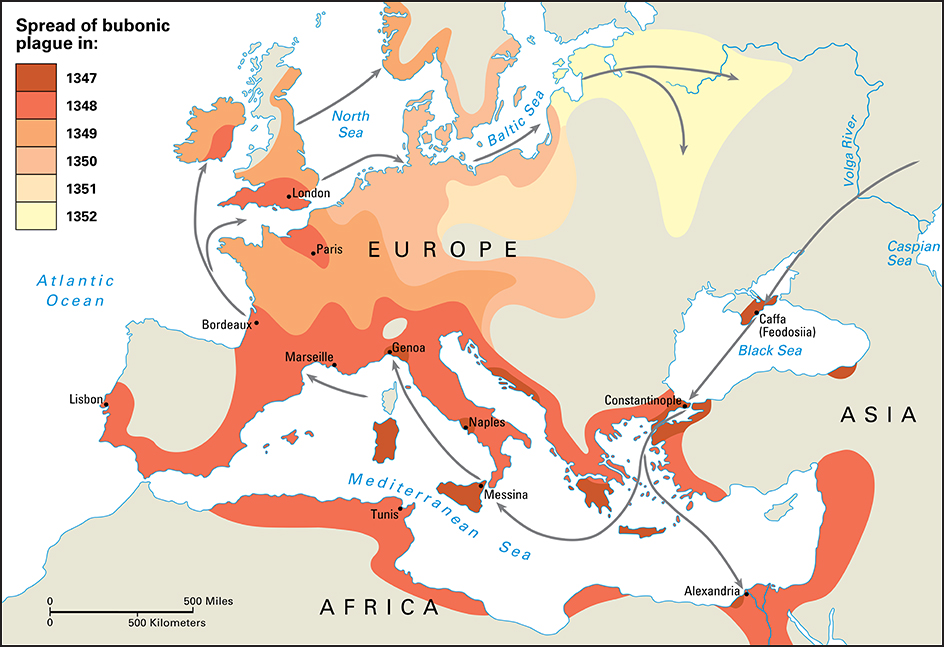Plague << playg >> is both the name of a serious infectious disease caused by the bacterium Yersinia pestis and a term used to describe epidemics generally. This article discusses the disease caused by Y. pestis. The bacterium is named after French scientist Alexandre Yersin, who first identified it in Hong Kong in 1894. Since early times, epidemics of plague have killed hundreds of millions of people. Plague bacteria infect rodents, such as rats, ground squirrels, and prairie dogs. The bites of fleas transmit the germs from rodent to rodent and from rodents to human beings or pets.
Forms of plague.
The three main forms of plague are (1) bubonic, (2) septicemic, and (3) pneumonic. Bubonic plague is by far the most common form. It results when a person is bitten by an infected flea. The plague bacteria invade lymph nodes near the bite, causing painful swellings called buboes. The buboes usually appear in the legs, neck, armpits, or groin. Plague is called septicemic when the bacteria infect the bloodstream and spread to other parts of the body. Pneumonic plague occurs when the bacteria infect the lungs. It is the most dangerous form because patients can spread the bacteria easily to others by coughing.

Symptoms of plague develop from one to eight days after infection. Symptoms include high fever, rapid pulse, headache, body aches, and weakness. Antibiotics are effective against plague if given soon after infection. Unless treated, plague patients deteriorate rapidly, and most die within five days.
History of plague.
Medical historians have identified many epidemics of plague based on written descriptions and paintings of people with buboes. Perhaps the earliest such description is the Plague of Ashdod which occurred about 1000 B.C. and is described in the Bible.
In the mid-500’s A.D., an epidemic that was almost certainly plague struck the Byzantine Empire and spread from the Black Sea across Europe, killing as much as half the population of Constantinople (now Istanbul, Turkey). Historians later called this the first pandemic (worldwide occurrence) of plague. See Plague of Justinian.

A second pandemic, often called the Black Death, swept across Asia and Europe in the mid-1300’s. The pandemic probably began in Central Asia early in the 1300’s. Trading ships carried infected rats west to the Mediterranean Sea. From there, plague spread through most of Europe. By 1400, it had killed 20 million to 30 million people. 

A third pandemic began in China in the mid-1800’s. Over the next 75 years, plague spread to every inhabited continent and killed up to 20 million people. Plague reached San Francisco in 1899, and later other ports, via ships. Health professionals eventually controlled plague in U.S. cities, but plague-infected wild rodents spread from California to many western states, where several cases still occur each year.
Today, plague occurs occasionally throughout the world, with 1,000 to 2,000 cases reported annually. The bacteria flourish mainly in rural areas, including the western United States, central and southern Asia, Africa, South America, and nations bordering the Caspian Sea.
International agreements require caregivers to report cases of plague rapidly so authorities can take preventive measures, usually focusing on rodent control. Vaccines provide little protection and are mainly given to people who may encounter plague in their work, such as wildlife biologists. Since the 1990’s, public health experts have become increasingly concerned about plague because it has the potential for use in biological weapons.
